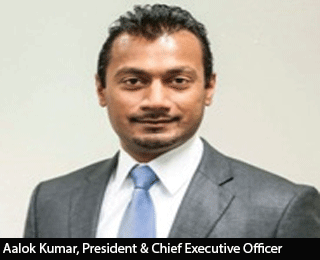 India's economic growth has been at an all-time high, thanks to increased population and industrial expansion. And it is the result of this quick advancement that India, particularly in the metropolitan areas, has seen a surge in the number of vehicles. This is adding pressure to the already overloaded and crippled road networks. As a knock-on effect, public transport is becoming more unreliable and overcrowded, encouraging many to stay away from such public services.
India's economic growth has been at an all-time high, thanks to increased population and industrial expansion. And it is the result of this quick advancement that India, particularly in the metropolitan areas, has seen a surge in the number of vehicles. This is adding pressure to the already overloaded and crippled road networks. As a knock-on effect, public transport is becoming more unreliable and overcrowded, encouraging many to stay away from such public services.This is leading to increasing congestion on the roads. Another issue is identifying traffic offenders and issuing penalties and challans promptly. Manual processes cause offenders to avoid detection while making penalty collection a time-consuming task. The government too, has recognized these challenges and is pushing towards a more intelligent public transportation system through various initiatives. In the recent Union Budget, the government has given a massive push to the transportation sector by allocating Rs 1.99 trillion (from Rs 1.18 trillion in FY22) to enhance the transport infrastructure.
Smart Transportation, ICCC and ITMS
Smart transportation and smart city traffic management are revolutionizing how cities approach mobility and emergency response while reducing congestion on city streets by utilizing advanced communication technologies and centralized monitoring. Cities today need to leapfrog legacy technology systems and adopt intelligent systems to combat this growing urbanization and population growth.
Recognizing the need for safe, secure, and seamless transportation systems, NEC has developed a cutting-edge integrated Command & Control system that integrates feed from applications such as automatic number plate identification (ANPR), Red-light Violation Detection (RLVD), speed limit violation detection and more, that helps in detecting traffic offenders and ensuring safer roadways.
Aalok Kumar, President and CEO, says, "NEC's Intelligent Transportation System (ITS) is an advanced platform that aims to enhance traffic safety, increase mobility network efficiency, and minimize environmental impact. The solution is based on a centralized command & control system. Here data on traffic conditions is collected from numerous sensors and sources which is further analyzed to provide actionable insights. It further helps in actively influencing traffic through proactive monitoring and action. This information may be shared with motorists, law enforcement agencies, and other stakeholders for effective management and improve services for commuters and passengers”.
NEC has played an instrumental role in becoming the backbone of India's transportation sector by taking BRT projects across heavily populated cities such as Ahmedabad, Surat, Pune, and Hubli. The solution improves the efficiency of BRT bus services by using a cashless open-loop card system. In addition to automated fare collection, the one-stop, IoT-driven system manages bus resources, bus maintenance, transport information, and personnel.
It also collects and analyzes data to help optimize resources and boost ticket sales. These solutions have led the city authorities to save avg 20-50 percent on costs. Additionally, considering the future of travel, NEC has deployed facial recognition led bio metric tech at Lal Bahadur Shastri Airport in Varanasi and is in the process of implementing the same at airports in Kolkata, Pune and Vijayawada.
In collaboration with its partners and government agencies, NEC aspires to create a vision of a cleaner, smarter, and brighter future for people and transportation and mobility form critical components of achieving this goal.
NEC has played an instrumental role in becoming the backbone of India's transportation sector by taking BRT projects across heavily populated cities such as Ahmedabad, Surat, Pune, and Hubli. The solution improves the efficiency of BRT bus services by using a cashless open-loop card system. In addition to automated fare collection, the one-stop, IoT-driven system manages bus resources, bus maintenance, transport information, and personnel.

NEC's Intelligent Transportation System (ITS) is an advanced suite of applications that aims to provide innovative services relating to different modes of transport and traffic management and enable users to be better informed and make safer, more coordinated, and smarter use of transport networks
It also collects and analyzes data to help optimize resources and boost ticket sales. These solutions have led the city authorities to save avg 20-50 percent on costs. Additionally, considering the future of travel, NEC has deployed facial recognition led bio metric tech at Lal Bahadur Shastri Airport in Varanasi and is in the process of implementing the same at airports in Kolkata, Pune and Vijayawada.
In collaboration with its partners and government agencies, NEC aspires to create a vision of a cleaner, smarter, and brighter future for people and transportation and mobility form critical components of achieving this goal.




